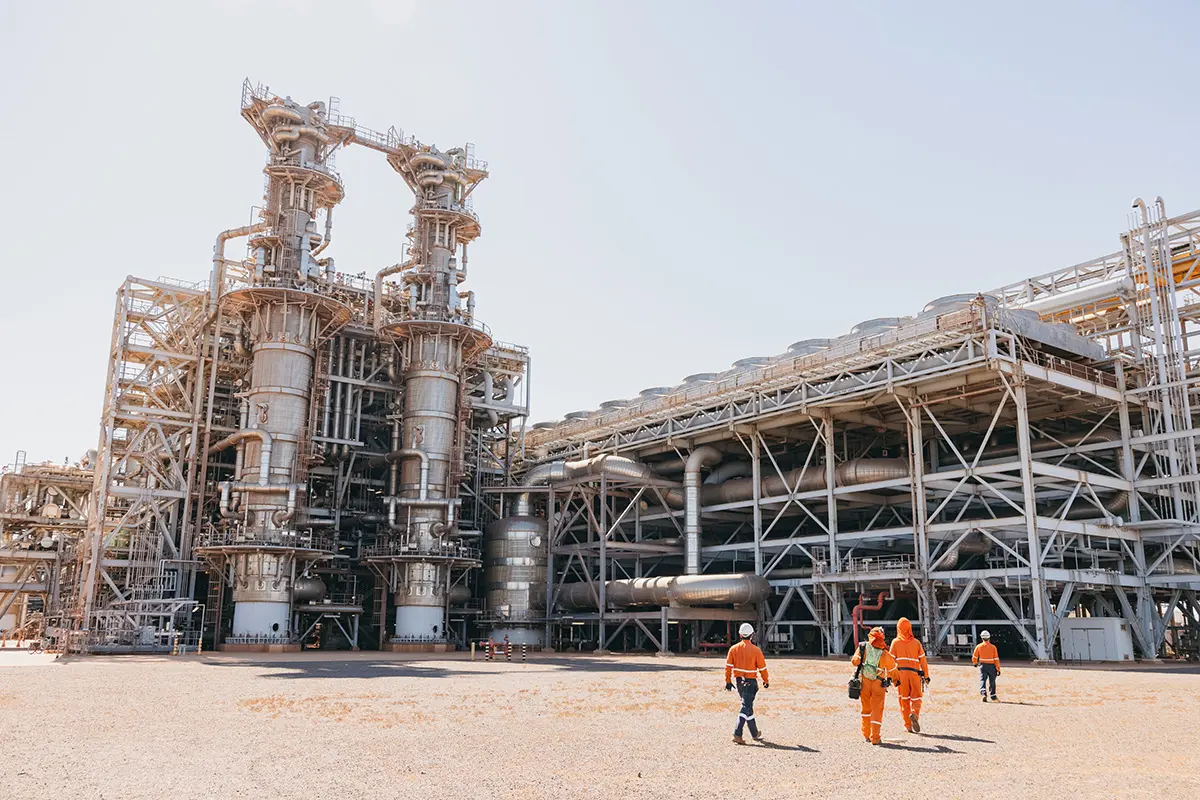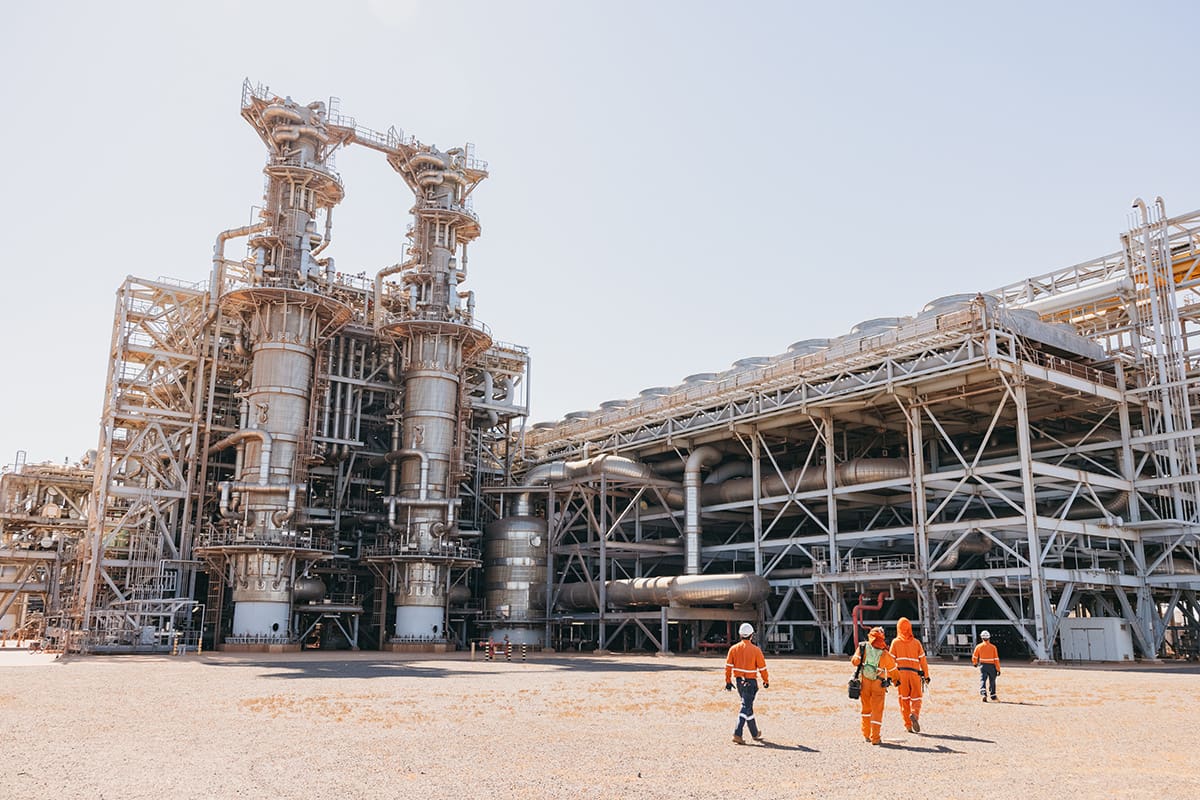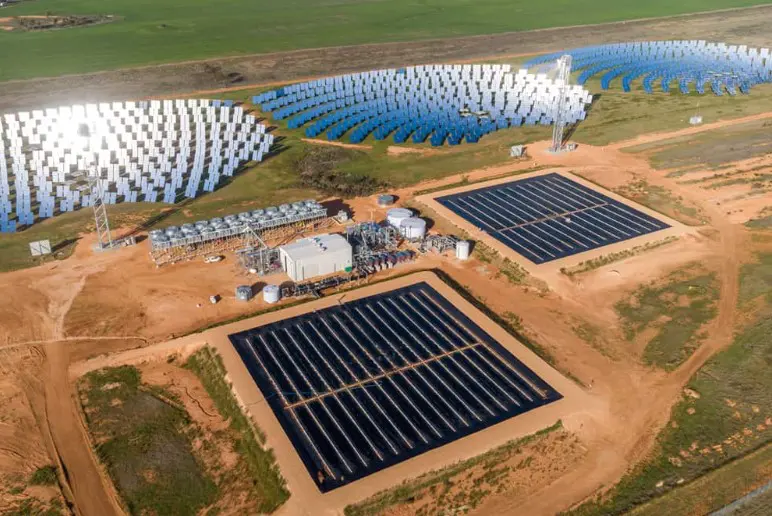


The Australian Renewable Energy Agency (ARENA) has announced US$10 million in funding to RayGen Resources Pty Ltd. (RayGen). The funding will progress RayGen’s solar and long-duration storage technology toward utility-scale deployment.
In January 2023, RayGen commenced operation of its power plant in Carwarp, Australia. The facility generates 4 MW of renewable power backed with 2.8 MW/50 MWh of storage for around 17-hours duration. The Carwarp plant is RayGen’s flagship technology demonstration project. This plant provides on-demand power to the West Murray distribution network in Northwest Victoria, offering improved grid security and reliability with synchronous generation.
Four solar towers each generate 1 MW of electricity and 2 MW of heat. Two 17,000 m3 water pits store enough thermal energy to drive a 2.8-MW ORC turbine for 17 hours (50 MWh). The project saves 11,000 tons (10,000 tonnes) of carbon dioxide emissions annually and provides electricity to approximately 1000 homes.
“ARENA has supported RayGen for more than a decade from early design validation, through to pilot-scale, and now progressing to utility-scale assets,” said ARENA Chief Executive Officer Darren Miller. “We’re excited by the opportunities RayGen’s renewable energy technology offers in helping us get to net zero.”
The funding will help RayGen improve the design of its technology, achieve material cost reductions, and conduct front-end engineering and design of a planned utility-scale, 200-MW solar and 115-MW/1.2-GWh storage deployment of its technology in Australia.
The Technology
RayGen’s Photovoltaic Ultra system uses a field of smart mirrors that concentrate sunlight to an array of solar modules in a tower mounted receiver. Each receiver contains hundreds of modules arranged in an array to absorb energy from the field. Each module contains 100 satellite-grade solar cells. Combined, they enable the receiver to generate 1 MW of electricity and 2 MW of heat in the form of hot water from each receiver. This byproduct heat is captured and stored in a large covered and insulated water pit.


Two 65.6-ft. (20-m) deep water pits store energy as hot and cold water. The cold water pit is “charged” using electricity and a standard ammonia-cycle chiller. The hot water is sourced from RayGen’s hi-tech solar or a heat pump. The pits are covered and insulated, meaning minimal water and heat loss.
According to RayGen, thousands of megawatt hours of energy can be stored in this way at a very low cost used in Europe’s district heating network. At the same time, a portion of the electricity is used to run a chiller. This creates an equivalent amount of cold energy that is stored as cold water in a separate storage pit of the same design. The insulated storage pits maintain a temperature difference of 90 degrees.
When electricity is required from storage, the temperature difference drives an organic Rankine cycle (ORC) turbine. Ammonia, the working fluid in the turbine, is evaporated by the hot water to turn the turbine to generate electricity. The ammonia is then cooled and re-condensed by the cold water to go through the cycle again. No ammonia is consumed in the process. The ORC turbine drives a synchronous generator, which can operate as a synchronous condenser when decoupled from the turbine.
In its flagship project, RayGen’s electrical roundtrip efficiency is 70%. For every one megawatt hour of electricity put into storage through the chiller, 0.7 megawatt hours of electricity is delivered out of storage to customers. According to RayGen, this efficiency is enabled by two main factors: a high coefficient of performance for the chiller — one megawatt hour of electricity delivers 6.3 megawatt hours of cold energy store; and byproduct heat is created without using any electricity. The use of free byproduct heat paired with a cold store greatly enhances roundtrip efficiency and therefore the economics, the company said.